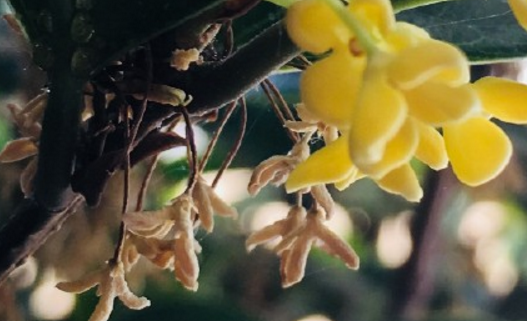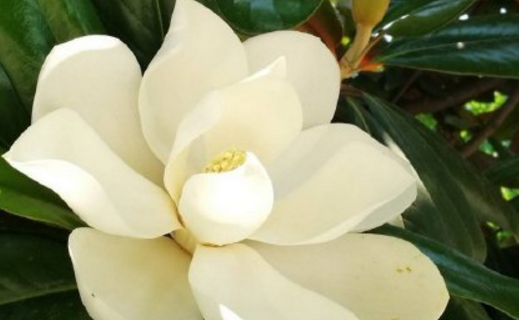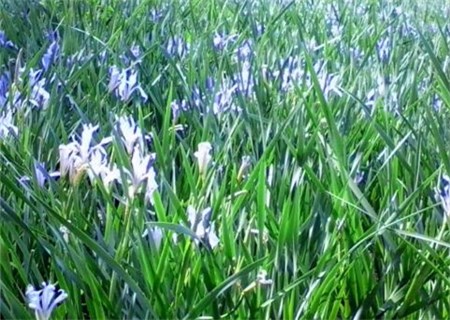What is the difference between four seasons cinnamon and cinnamon of Oleaceae? What if the leaves fall off? What if it doesn't blossom?
The color of osmanthus flowers in the four seasons is slightly white, or yellowish, the aroma is lighter, and the leaves are thin. it is a variety of sweet clover osmanthus, so what is the difference between osmanthus and osmanthus? What if the leaves fall off? What if it doesn't blossom? It is understood that the four seasons Gui Xi warm and humid climate, there is a certain degree of cold resistance, but not resistant to severe cold. Like light, but also resistant to shade, in the seedlings should have a certain degree of shade. The demand for soil is not high, like the slightly acidic soil with high dryness and rich humus, especially the sandy soil with deep, fertile and moist soil and good drainage.

First, what is the difference between Ke Siji Gui and Jin Gui?
1. The aromas of four seasons cinnamon and cinnamon are different.
The aroma of osmanthus is very rich, in the common sweet-scented osmanthus, the aroma of cinnamon belongs to the strongest. The aroma of the four seasons cinnamon is slightly fresh and elegant. This is the obvious difference between Jin Gui and Siji Gui.
2. The colors of cinnamon and cinnamon are different
The flower color of cinnamon is a transition from lemon yellow to golden yellow, while the flowers of cinnamon are slightly white, even yellow is very light. In this way, four seasons cinnamon and golden cinnamon can be easily distinguished from flowers and colors.
3. The leaf morphology of Siji cassia and cinnamon is different.
The leaves of cassia are relatively thick, and the color of the leaves is also relatively dark, which belongs to dark green and has a strong sense of gloss. The leaves of cinnamon are oval, and there is mesophyll protruding above the leaf surface, which looks uneven. The edges of the cinnamon are serrated, the leaves are pointed at the front, and the leaves are dark green at the top and light green at the bottom.
4. The flowering periods of four seasons osmanthus and cinnamon are different.
The flowering period of cinnamon is from late September to early October, and the first flowering is a little more fragrant than later. On the other hand, the four seasons osmanthus blossoms all the year round, and a small number of flowers bloom in each season, of course, autumn blossoms are the most.
5. The habits of four Seasons and Jin Gui are different.
Jingui has strong adaptability and is suitable for planting in shady places. Cinnamon is suitable for growing in places where the sun is relatively abundant and the climate is warm and humid. The four seasons cinnamon is very hardy, and if there is no extra cold wave in winter, you can generally spend the winter in the open.
6. The values of four seasons osmanthus and cinnamon are different.
Cinnamon is beautiful and grows well. In addition, cinnamon has dark color, strong aroma and dense blooming, so it is mainly used for ornamental cultivation. Of course, cinnamon can also be used to extract aromatic oil, and the flowers and roots of cinnamon can also be used as medicine. Four seasons cassia has a certain resistance to some harmful objects, so it is suitable to be planted as a greening tree species in the interior of the garden, or on both sides of the road, lawn or courtyard.
Second, what if the leaves fall off?
Daily maintenance
According to previous observations, if one side of the cinnamon is close to the wall or when the two cinnamon overlap each other, the side close to the wall or the part that is intertwined will soon become sparse, which seriously affects the posture and visual effect of the whole crown, so when planting, we should pay attention to choosing places with good ventilation and plenty of sunshine. In addition, the four seasons cassia can not be polluted by smoke and dust, otherwise it will not bloom, and if there is too much water, the leaves of the four seasons cassia will wither and fall off, and even the whole tree will die, so you must not water too much, and it is best not to have stagnant water.
Disease control:
In fact, if blight occurs, it will also cause the leaves of Cinnamomum cassia to fall off, and its blight develops from the edge of the leaf to the tip of the leaf. In the early stage of the disease, small white spots will appear on the leaves, and then gradually expand. The onset time of blight is generally from July to November, and it is more likely to occur in the environment of high temperature, high fever and poor ventilation. Therefore, we must prevent and cure blight as soon as possible!
What if it doesn't blossom?
The lack of light is the reason why the cinnamon does not blossom.
When raising four seasons cinnamon, insufficient light will cause it not to blossom. The demand for light is still very high, because the light may better promote the differentiation of flower buds. The four seasons cinnamon, which is generally cultivated in places with plenty of light, blossoms well, but if it is hidden for a long time, it will lead to the growth of branches and leaves and affect the formation of flower buds.
When raising four seasons cinnamon, be sure to meet its demand for light and plant it in a sunny and well-ventilated place so that it can be fully exposed to sunlight.
The four seasons cinnamon did not blossom because of serious pollution.
When raising four seasons cassia, especially as a road greening tree species, it may come into contact with a lot of polluted air, resulting in the accumulation of harmful substances and affecting flowering.
Therefore, we must pay attention to the surrounding environment and reduce pollution sources.
The four seasons osmanthus did not bloom because of stagnant water.
Four seasons osmanthus is more afraid of stagnant water, in the breeding of four seasons osmanthus, if too much watering, it is easy to appear stagnant water, resulting in rotten roots. If this happens, it will be more difficult for the four seasons to blossom.
In the cultivation of osmanthus, we need to choose dry and well-drained sandy soil, watering should also be appropriate.
It is improper to apply fertilizer if the osmanthus does not blossom.
In the cultivation of four seasons cassia, the lack of fertilizer will lead to insufficient accumulation of nutrients, and blind fertilization will also bring adverse effects to the four seasons cassia. All these will affect the flower bud formation and flowering of four seasons cinnamon.
Therefore, in the cultivation of four seasons osmanthus, to master the time of fertilization, the right amount of fertilization, is the key.
Time: 2019-03-16 Click:
- Prev

Why doesn't Magnolia magnolia blossom? What if the leaves turn yellow? What are the effects and effects?
Magnolia belongs to Magnoliaceae, also known as Magnolia, Magnolia lanceolata, so why does Magnolia not blossom? What if the leaves turn yellow? What are the effects and effects? It is understood that Magnolia mandshurica is light-loving and slightly shady when it is young. Like warm and humid climate, have a certain degree of cold resistance
- Next

What are the prevention and control methods of Iris flower rust? What are the efficacy and medicinal value?
Ma Lin is also known as Ma Lian and Lin Hua. Perennial herbs of Iridaceae. Used in medicine with flowers, seeds and roots. Iris flower has the effect of clearing heat and cooling blood, diuresis and detumescence. It is distributed all over the country. So do you know what are the prevention and control methods of Iris flower rust? What are the efficacy and medicinal value? Control methods of flower rust of Iris lanceolata
Related
- Fuxing push coffee new agricultural production and marketing class: lack of small-scale processing plants
- Jujube rice field leisure farm deep ploughing Yilan for five years to create a space for organic food and play
- Nongyu Farm-A trial of organic papaya for brave women with advanced technology
- Four points for attention in the prevention and control of diseases and insect pests of edible fungi
- How to add nutrient solution to Edible Fungi
- Is there any good way to control edible fungus mites?
- Open Inoculation Technology of Edible Fungi
- Is there any clever way to use fertilizer for edible fungus in winter?
- What agents are used to kill the pathogens of edible fungi in the mushroom shed?
- Rapid drying of Edible Fungi

